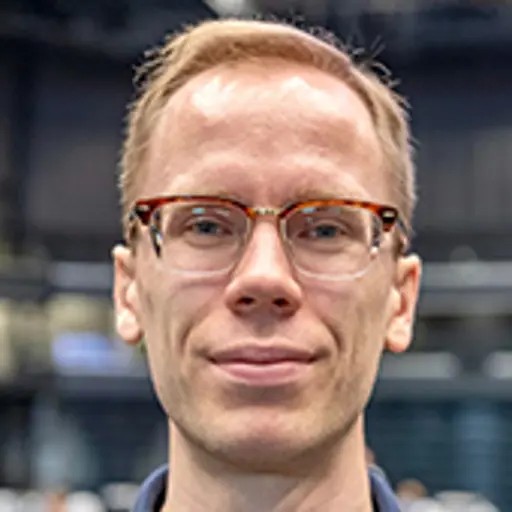
“For groundbreaking discoveries in new areas of quantum optics: large atoms, strong coupling between light and electrons, and theoretical work for the development of quantum computers.” This is the motivation as the Royal Swedish Academy of Sciences selects Anton Frisk Kockum as the 2025 recipient of the Wallmarkska Prize.
“I’m proud and honored to have been awarded this prize. For me, the prize is a recognition of the importance of my research in large atoms, quantum computers built on superconducting qubits, and ultra-strong coupling between light and matter. I also hope that it is an encouragement for my research group to continue working in these areas,” says Anton Frisk Kockum, this year's laureate and Associate Professor in Applied Quantum Physics at the Department of Microtechnology and Nanoscience at Chalmers University of Technology.
The Wallmarkska Prize is awarded annually as a reward for findings or inventions that “in some remarkable way advance the progress of the sciences and industries” in mathematics, astronomy, applied mechanics, physics, chemistry, mineralogy and technology. The prize stems back to 1859, when mathematician and politician Carl Johan Malmsten was recognized for his advances in the integration of differential equations. When Anton Frisk Kockum now receives the prize, he becomes the 177th person in line to be awarded – thus joining several renowned researchers on the prestigious list. Here we find, among others, Gustaf de Laval's invention of the separator in 1880, Ulf Danielsson's decisive contributions in research on modern superstring theory in 1998, as well as Chalmers researcher Saroj Prasad Dash, Professor of Quantum Device Physics, who was awarded in 2023 for his groundbreaking research on spintronics in 2D layers in new materials, not least graphene, as well as topological and magnetic layers.
“I see this prize as recognition also for all the researchers I have and have had the privilege of collaborating with. The progress in these areas is a result of the ideas and efforts of many people. I’m also grateful for the support I have received over the years from my research from various funders: the Nano Area of Advance at Chalmers, the Japan Society for the Promotion of Science (JSPS), the Knut and Alice Wallenberg Foundation through the Wallenberg Centre for Quantum Technology (WACQT), the Swedish Research Council (VR), the Foundation for Strategic Research (SSF) and the EU,” says Anton.
In the statement from the Academy of Sciences, Anton is awarded for his "groundbreaking discoveries in new areas of quantum optics: large atoms, strong coupling between light and electrons, and theoretical work for the development of quantum computers". Large atoms is a relatively new research area in quantum optics and was initiated at Chalmers about ten years ago. By coupling an atom to light at several different points that are wavelengths apart, interesting interference effects can be achieved. After spending a few years on fundamental research to try to understand what is possible in theory and practice in the field, the research has now started to approach application.
“Now I have started to shift my focus towards exploring possible applications of large atoms in various quantum technologies, for example simulation of open quantum mechanical systems. This is one major part of my research right now. The other major part is about building a quantum computer on a larger scale at Chalmers within WACQT, where I lead a group that supports the experimental work with theory. Here, our main challenges are to make logical operations on the quantum computer fast and precise, even when there are many qubits on the chip, which can increase problems with crosstalk,” Anton explains.
The Wallmarkska Prize comes with a prize sum of 435,000 SEK. Have you had time to think about what you want to do with the money?
“The prize money is not earmarked for research but is considered a personal reward. As such, it is significant, and I haven't really taken it in yet. But I think some of the money will go to making my wedding this summer a little more lavish and adding some luxury to life in various ways. Most of it will probably be invested for the future,” says Anton.
- Associate Professor, Applied Quantum Physics, Microtechnology and Nanoscience
